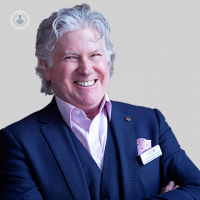Top surgery: what to expect
Written in association with:If you’re undergoing a female-to-male (FtM) transition, one of the most popular surgical procedures available is top surgery. Since many patients wonder what to expect from the procedure, we spoke to one of London’s leading plastic surgeons Mr Christopher Inglefield about what top surgery involves.

What is top surgery?
Top surgery is a surgical procedure that aims to remove the female breasts and achieve a natural male breast shape. It is also known as a subcutaneous mastectomy. It is a common procedure for patients undergoing a female-to-male (FtM) transition. Getting top surgery can make you feel more self-confident, enabling you to wear the clothes of your choice without the need for a chest binder.
Top surgery is a permanent procedure, so it is important that you take the time to fully consider whether this procedure is right for you.
What does the procedure involve?
Top surgery involves:
- removing breast tissue
- reshaping the chest to a natural male appearance
- reducing and repositioning the nipple and areola to a proportionate male nipple size and shape.
Top surgery generally takes 1-2 hours to perform. The length of the procedure varies depending on your size and shape, as do the techniques involved. Top surgery is commonly performed under general anaesthetic, but some patients may be suitable for local anaesthetic, meaning you’ll be able to go home on the day of the procedure.
If you are over the age of 40, you will have a screening mammogram before any removal of breast tissue. This can be arranged for you at the time of your consultation.
What are the risks?
All operations carry out risks, but top surgery is very safe. The main risks are:
- bleeding under the skin
- infection
- poor nipple healing
- loss of nipple sensation
- deep vein thrombosis
- chest asymmetry
Many of these risks can be managed with revision surgery.
What is recovery like?
After the operation, you’re likely to experience moderate pain for a few days, as well as swelling for up to 2-3 weeks. For the first few weeks, you’ll need to wear a support garment.
After two weeks you should be able to return to normal activities. However, be sure to avoid heavy exercise for six weeks.
You will have scars after the operation, but these should be small and barely visible. They will be situated around the nipple and the pectoral muscle. Some clinics will offer extensive scar care for up to a year after the operation to make sure they heal as well as possible.
If you’d like to book a consultation with Mr Christopher Inglefield about top surgery, you can do so by visiting his Top Doctors profile.



